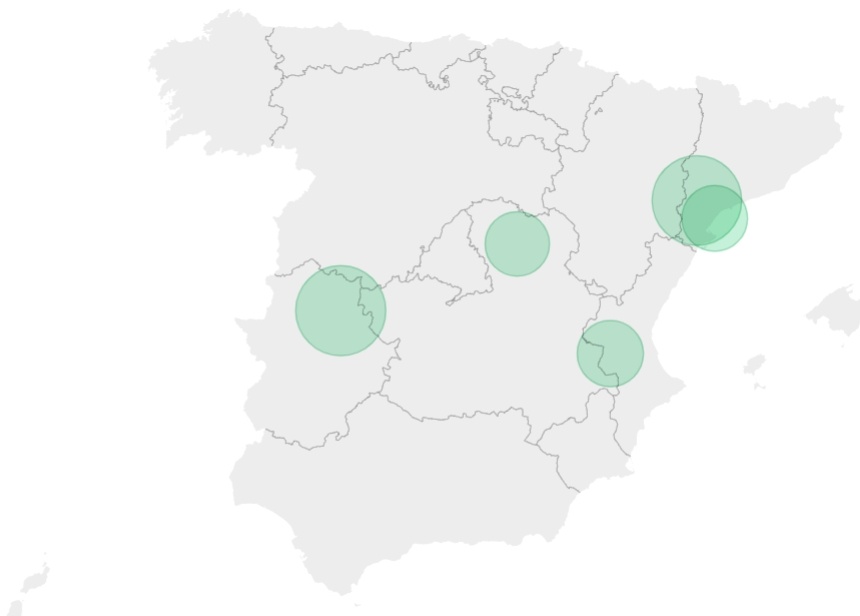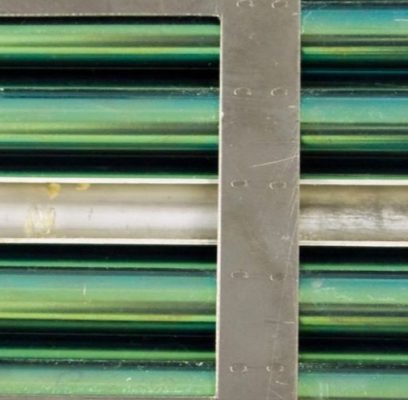Russia is the world’s leading exporter of enriched uranium, used as fuel in nuclear reactors. This means that the energy dependence of both Spain and the rest of the European countries also extends to the field of nuclear energy.
The possibility of investing in nuclear power plants in Spain to generate energy has been revived by the increase in the price of electricity and the attempt to reduce resources from Russia. However, this intention poses a paradoxical scenario due to Spain’s dependence on enriched uranium, of which Russia was the largest exporter worldwide in 2020, according to the Observatory of Economic Complexity (OEC).
This element is the fuel for the seven nuclear reactors in Spain, as confirmed to Newtral.es by Alfonso Barbas Espa, a nuclear engineer at the National Uranium Company (Enusa). However, despite the fact that Russia accounts for around 40% of the enrichment of this raw material throughout the globe, according to Guillermo Sánchez León, professor of the Master’s Degree in Mathematical Modeling at the University of Salamanca (USAL), enough reserves of enriched uranium to guarantee the operation of the plants.
Distribution of nuclear power plants in Spain
The size of the circle represents your production capacity. In the Ascó and Almaraz plants there are two reactors, as stated by the Nuclear Safety Council.

Russia is the main exporter of enriched uranium
The process of creating nuclear fuel ranges from the mining of uranium and the manufacture of concentrates to the elaboration of the fuel, going through the conversion of the material and its enrichment. In Spain, Enusa is in charge of the final process. The rest of the operations are carried out outside the country’s borders, according to the website of the Ministry for the Ecological Transition and the Demographic Challenge (Miteco).
One of these territories is Russia, which, at the time of the start of the Russian invasion of Ukraine, was the largest supplier of enriched uranium to Spain, according to Barbas. In 2021, in fact, 29.1% of the uranium concentrates purchased by Spain came from Russia, a country that also accumulated a year earlier, in 2020, around half of the world’s capacity to produce enriched uranium, according to the Energy 2022 publication of the Nuclear Forum.
Even so, it is complex to know to what extent Spain’s energy dependency extends to the country governed by Vladimir Putin. As reported by the Secretary of State for Trade, Customs statistics on enriched uranium “do not reflect its ultimate origin.” “Enriched uranium is usually subject to a transformation – it is in the form of gas and must be converted into a solid – before being imported and this is done in two plants: one in the United Kingdom and the other in the United States,” they explain.
This means that, “for Customs purposes”, the enriched uranium imported by Spain comes from these two countries, “although part of it has been previously enriched in Russia”.
Spain has reserves for two recharges of a year and a half
Despite this energy dependence on Russian enriched uranium, there is a low risk of shortages, according to the Government in response to a written question from Congress in March 2022. Thus, Spain, by law, must have a minimum of the equivalent of “ two 18-month recharges” of the reactors, which is the period in which the changes and rearrangement of the nuclear fuel take place.
In addition, another factor that reduces the risk is “the diverse geographical distribution of uranium resources, as well as the facilities in which the conversion and enrichment processes are carried out, located in countries with political stability.” For this reason, from the point of view of Barbas, nuclear energy continues to provide “energy independence”.
Although Sánchez, an energy specialist at USAL, acknowledges Russia’s dependence, not only on enriched uranium but also on the ships that transport it, he emphasizes the existence of reserves in Spain and enrichment facilities in Europe, as well as the less use of energy resources in nuclear plants than in other types of plants. “With 100 tons [of uranium] you have the same electrical capacity as with two million or three million tons of coal or fuel”, he exemplifies.
In its 2021 annual report, published in June 2022, Enusa assured that, for the time being, the conflict in Ukrainian territory is not expected to “have significant effects on the uranium supply activity” in Spain. Although two months earlier he recognized that Russia is a “relevant supplier” for the country in this area, according to Europa Press, he indicated the existence of a contingency plan to deal with interruptions in supply.
What is enriched uranium used for in a nuclear power plant?
To produce energy in a central nuclear uranium-235 is required, that is, one of the isotopes that are part of natural uranium, as explained by the World Nuclear Association. However, as this only makes up 0.7% of the initial resource, the process takes place through which it is enriched and has a concentration of between 3% and 5%, “a proportion used in most reactors”, it states on its website.
Subsequently, this enriched uranium, mainly exported by Russia in 2020, goes to fuel factories where it is transformed into uranium dioxide powder, which is compressed into pellets or small tablets of the material. These are introduced into tubes that, together with other equal ones, form the fuel of a power plant. These compounds remain in the core of the reactor “for several years”, according to this organization.
According to data published by the World Nuclear Association, Russia accounts for 15.4% of the uranium enrichment capacity, 19.4% of its compression in pellets and 17.8% of the rod and fuel composition final. Therefore, despite the existence of supply alternatives for enriched uranium, it is necessary to take into account that Russia comprises an important part of the nuclear energy supply chain.

